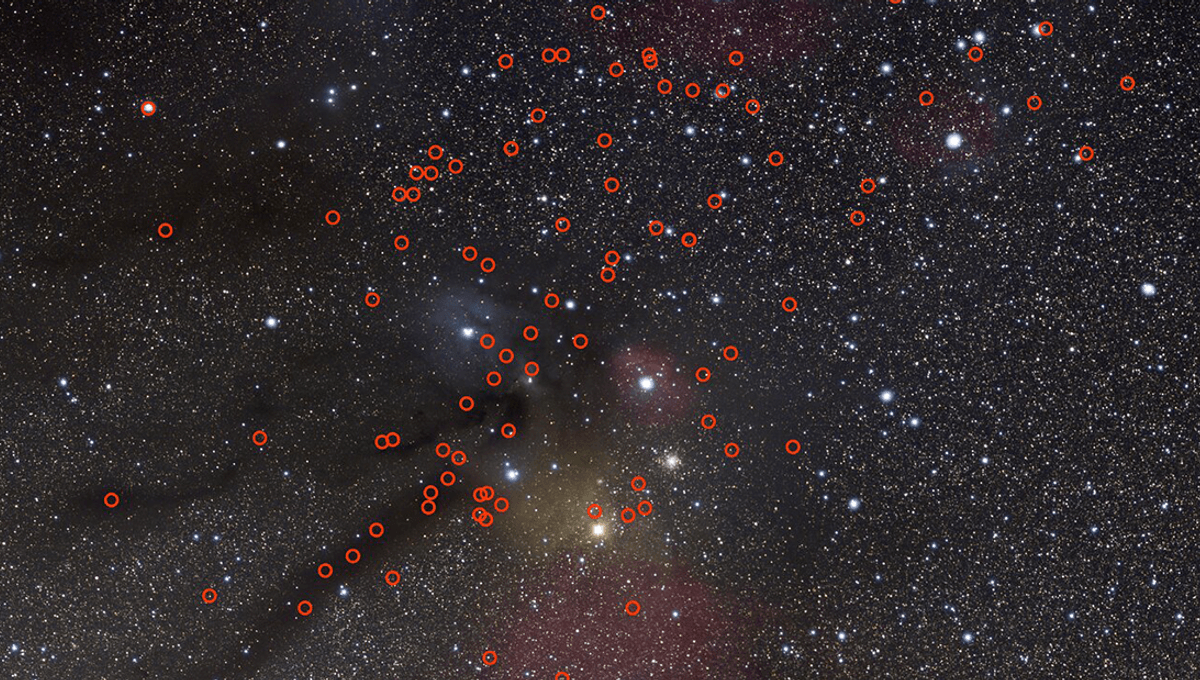In the popular Netflix science fiction series 3 Body Problem, a mysterious virtual reality (VR) video game is delivered to several key characters. Within this game, players are tasked with aiding an extraterrestrial race in resolving a perplexing dilemma: how to anticipate the movements of their planet’s trio of suns.
The three-body problem poses a fascinating challenge, thrusting the simulated aliens into a realm of apparent impossibility as they strive to navigate the chaos induced by the gravitational dance of the three suns. This scenario mirrors other speculative worlds where life could potentially emerge, even amidst similarly bizarre circumstances. One intriguing concept, proposed by cosmologist Dan Hooper and astronomer Jason Steffen in 2012, envisions a planet sustained by dark matter, offering a unique pathway for life to thrive.
According to current astronomical observations, merely about 5 percent of the observable universe comprises ordinary matter. The bulk of the cosmos, approximately 27 percent, is composed of dark matter, with the remainder dominated by dark energy, constituting roughly 68 percent.
Dark matter, an enigmatic substance devoid of luminosity, interacts solely through gravitational forces with regular matter, leaving behind discernible traces primarily in galactic structures. The 2012 study elucidates that when weakly interacting massive particles (WIMPs) collide, they undergo annihilation, releasing energy in the process.
The research highlights the immense energy potential harbored within the dark matter pervading our universe—an energy reservoir surpassing the total fusion energy achievable by converting all hydrogen into helium by a factor of approximately 10^3. Nonetheless, the typical scarcity of dark matter collisions limits its ecological impact on a significant scale.
An intriguing exception arises in the context of dark matter particles gravitationally trapped within a planet’s core. Predicted to interact with nuclei, these WIMPs can lose momentum, becoming gravitationally ensnared by celestial bodies. Subsequent annihilation of accumulated dark matter within a planet may yield energetic particles that interact with the surrounding material.
While Earth interactions yield a modest few megawatts of energy, planets situated in regions abundant with slow-moving, high-density dark matter could capture sufficient particles to sustain surface temperatures conducive to liquid water. Such conditions could plausibly support life, even on nomadic, starless worlds.
In these rare planetary settings, dark matter, rather than stellar radiation, emerges as the key factor enabling the emergence, evolution, and persistence of life forms. These hypothetical planets are likely concentrated in regions abundant with dark matter, such as dwarf spheroidal galaxies or the galactic core like the Milky Way. Life on these planets would manifest uniquely, possibly existing atop a thin surface layer encasing a molten interior. Despite the stark differences, these planets might offer advantages in fostering complex life, notably in terms of longevity. With adequate dark matter retention, these planets could sustain liquid water for trillions of years, potentially serving as enduring havens for life.
While the detection of such planets remains a challenge, the possibility lingers that such worlds exist, untethered from parent stars, meandering through interstellar voids, nurturing life within stable environments. Within such vast timescales, the evolutionary trajectories of life on these planets remain an intriguing enigma.
